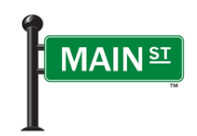
Source: Company.
Main Street Capital Corporation (MAIN 0.64%) is a strongly growing business development company that has demonstrated extraordinary resilience during the Great Recession. The company has grown its investment income dramatically over the last five years and continues to be a top choice for income investors looking for recurring income.
Background
Main Street has $1.5 billion in capital under management. The company had its public market debut in 2007 and generally focuses on investment opportunities in the lower middle market segment. Lower middle market companies usually have annual revenues of $10-150 million and achieve an EBITDA somewhere in the range of $3-20 million. With a market capitalization of just around $1.4 billion, Main Street belongs to the top five BDCs in the sector.
Like other BDCs, Main Street aims at achieving high-risk adjusted returns and has done well for shareholders over the last years. Its dividend payments have been increasing at a steady pace and in lockstep with profound net asset value growth.
Strong book value growth
Main Street has grown strongly in the lower middle market business over the last seven years. In fact, its above-average net asset value growth has led to a premium market valuation.
Two themes are particularly noteworthy when it comes to the evaluation of Main Street's net asset value growth record: First, Main Street's net asset value has grown respectably. It stood at only $12.85 per share at the end of 2007. At the end of 2013, Main Street reported a net asset value per share of $19.89, reflecting a total increase of 55% and a compound annual growth rate of approximately 8%.
Secondly, Main Street has delivered stable results during the Great Recession, which increases confidence in Main Street's ability to churn out further dividends in the coming years.
Moreover, net asset value growth does not appear to be subsiding: From the end of 2013 to the first quarter of 2014, Main Street's net asset value grew another 1.3% to $20.14 per share.

Source: Main Street Capital Corp. Investor Presentation First Quarter 2014.
Peer group valuation
Main Street has been one of investors' favorite investments in the BDC sector. This can easily be seen by looking at Main Street's price to book valuation compared to other BDCs.
Since business development companies pay out most of their earnings, premiums to book value/net asset value are fairly rare, and most companies do indeed trade at a price to book ratio close to 1.0.
The following chart depicts the price to book ratios of Main Street compared to other BDCs, including Prospect Capital, Ares Capital, and First Street Finance.
Main Street trades at a large premium to its net asset value, whereas the other BDCs trade at much lower book value multiples.

Solid distribution record
Main Street's dividend distributions to shareholders have reflected the underlying growth in its distributable net investment income. Like many other BDCs, Main Street had a respectable growth record during the financial crisis as customers increasingly turned to BDCs for their financing needs and big banks cut back on lending.
Main Street's distributable net investment income has increased by a staggering 673% from $10.3 million in 2009 to $79.6 million in 2013, and Main Street appears to be well on its way to surpassing the $80 million income mark in fiscal 2014.

Source: Main Street Capital Corp. Investor Presentation First Quarter 2014.
Since investors are quite convinced about the earnings prospects of Main Street, they have continuously pushed up its share price. Main Street now trades at a premium of 56% to its current net asset value of $20.14. Consequently, Main Street's dividend yield suffered as a result of its premium valuation.
Despite the premium price, investors still get to enjoy a 6.3% dividend yield based on a recurring monthly dividend of $0.165, and as an added bonus, the company occasionally supplements its regular monthly shareholder payments with special distributions.
Looking ahead
Though Main Street trades at more than a 50% premium to its net asset value, its record of consistent shareholder wealth creation justifies a premium valuation. Its solid performance record during tough times and prospects of special dividends further support an investment in Main Street.
